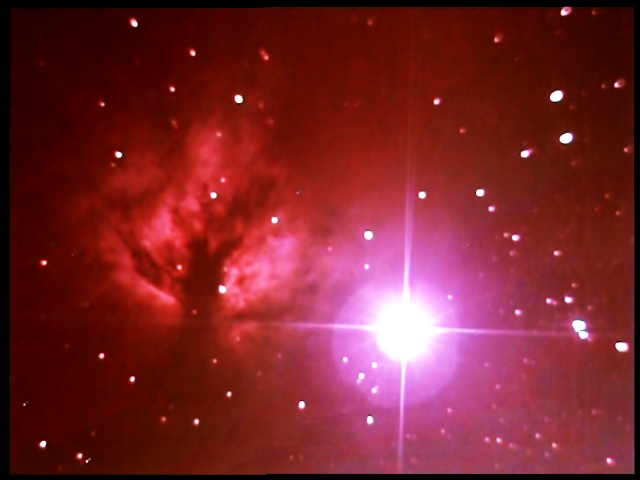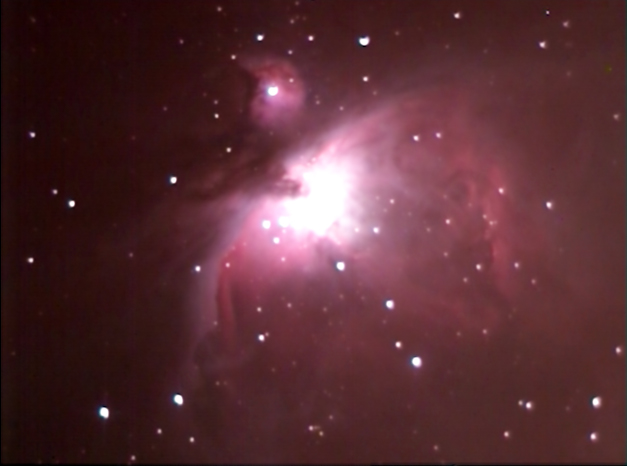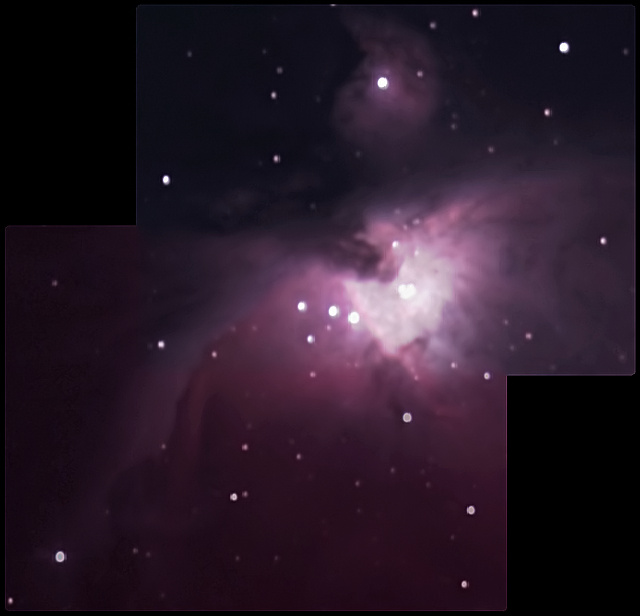These images were obtained with the camera AGC setting on LOW. In this mode, the image builds up gradually and persists. This mode is intolerant of any drift and the autoguiding was essential. The 0.5 focal reducer was placed with the light-pollution filter on the end of a very short nosepiece to reduce the focal reduction and allow sufficient in-focus.
December 9th, 2010
These images were obtained with the camera AGC setting on LOW. In this mode, the image builds up gradually and persists. This mode is intolerant of any drift and the autoguiding was essential.

December 8th, 2010

November 29th, 2010
November 28th, 2010
The image was obtained from a 15 minute DVD VOB with every 8th frame being used
A 70mm F=700mm refractor mounted in guidescope rings was used as the guidescope:
The scopes were mounted on a Synscan HEQ5 mount autoguided with a Shoestring USB Guide Port Adapter (GPUSB)
A DMK21AS camera was used as the guide camera set to 1.5s exposures PHD guiding was used as the autoguiding software
The modified Samsung SDC-435 video camera was the imaging camera set to 256 frames accumulation
The autoguiding software was run on a netbook. Here you can see the guide star at the intersection of the two lines on the computer screen and the ring nebula on the video monitor screen on the left.
Data were recorded to DVD for 15min (1 VOB file). The BMPs were extracted from the VOB using Dark Frame Scaler and were then stacked in Registax, being dark-frame corrected with a dark-frame scaled in Dark Frame Scaler.
The autoguiding allowed the whole field of view to be used in the final image as the edges were not lost due to drift.
November 9, 2010
The SDC-435 was fitted with a light pollution filter
The SDC-435 was fitted with a light pollution filter
The SDC-435 was fitted with a light pollution filter
The SDC-435 was fitted with a light pollution filter

October 11, 2010